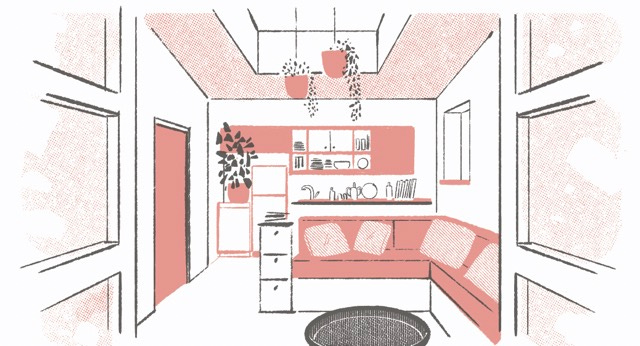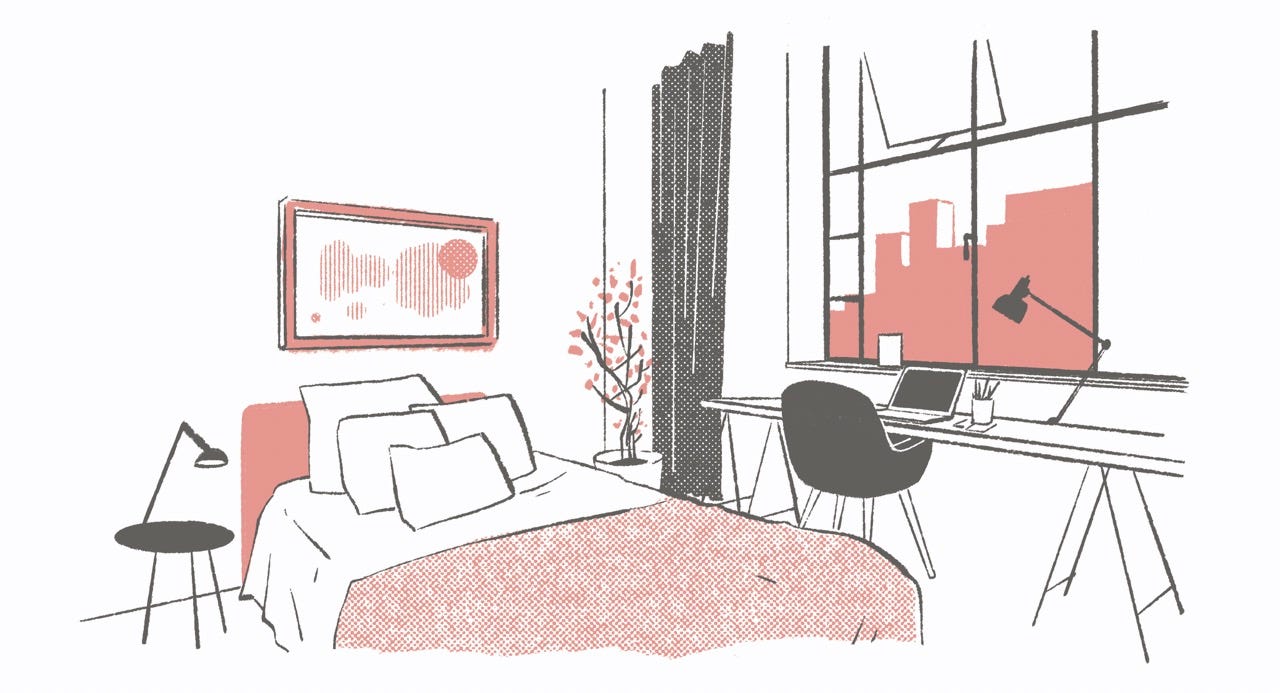What is a home?
Read an extract from Home; The Way We Live Now and paid subscribers can listen in below the paywall at the bottom.
I’m still finding my way around this new house – and since this extract from my latest book is a good introduction to my writing, I thought it would be fun to include it as a free post in my first month, while we are all still getting to know each other. However, I know that many of you have signed up as paid subscribers, so as an extra I have recorded me reading this and added a little more at the end that I haven’t transcribed. I have never made audiobooks so this really is a one-off. Or perhaps a first-off! Let me know what you think. I enjoyed doing it.
A house, according to Le Corbusier, one of the pioneers of what we know as modern architecture, is a ‘machine for living in’. It should function – he explained in his 1923 manifesto – efficiently and without extraneous parts. All that is needed to live comfortably and productively, he adds in Vers une architecture – still one of the all-time best-selling books on the subject – are simple shapes and clean lines, open floor plans with large windows so the occupants have room to move, and ‘that feeling of space which will give you the calm necessary to good digestion’.
But while this might describe the perfect house, it falls short of explaining how that house becomes a home. Indeed, Le Corbusier proceeded to complain that your ‘chandeliers hurt your eyes, your wallpapers are an impertinence’ and that any ‘good’ pictures on the walls would be lost in the ‘welter of furnishings’. He wanted to remove the decorative elements and personal touches that, nowadays, most of us feel are the very elements that make a home, as opposed to merely a house. This is because, for many, ‘home’ is as much an idea as a physical place. It is one of the few words in the English language that works as noun, adjective, adverb and verb. To be ‘home’ is to be surrounded by all that is comfortable and familiar and safe. The French talk about ‘foyer’, or hearth, the Spanish word ‘hogar’ is similar, while the Germans use ‘heim’.
Home is the place we want to retreat to when we feel threatened or scared. It is where we long to return to when we have been away, either by choice or through circumstance. It can be both an entire country - homeland - or a set of walls and a roof. And home, both as a physical place and a metaphorical concept, has taken on new and even greater importance in the last few years. Against a rolling background of official messaging urging us to stay home and stay safe, we have all been reminded how home is so much more than just a place to store clean clothes, shower and sleep. We have come to appreciate that the furniture we buy can provide mental as well as lumbar support, the colours we choose are capable of both delighting the senses and draining the spirits - and that the ways we organise our space can either free our minds or crush our creativity.
It may have taken a global pandemic and the threat of World War III for us to revisit our attitude to our homes, but exactly 100 years since Le Corbusier wrote his celebrated manifesto, we can finally appreciate the difference between the house as a machine and the home as as a place to live in.
Modern living in the 21st century seems to boil down to three key requirements: planning a functional and inspirational space to work from home on an ad hoc or semi-permanent basis, coping with the constraints of small-space living (for some this is an ecological rather than an economic choice); and helping those who rent which, while regarded in the UK at least as the less desirable option - with landlords having lots of rights and tenants having fewer - remains the long-term reality for many.
Our homes are the outward representation of who we are now, as well as who we would like to be in the future. But also, and perhaps more importantly, they are reflections of our inner selves. To reveal your home is to reveal yourself through the stuff you choose to surround yourself with. But embedded deep within that ‘stuff’ is not just the story of the people who live there at that moment. Our choice of furniture, art and ornaments are all guided by the unseen hands of those who came before us - whether it is a much-loved china statuette, a sagging armchair, or the desire to move as far away as possible from the style we grew up with. All this is what makes a house a home.
Just as no colour can be seen in isolation, because it will always absorb and reflect those around it, so no home can be seen as a single, sterile entity. It carries the stories that have already been written and shapes those that are yet to be told.
Your home should reflect the people who live in it. Have you designed your home or did you decorate it? Did you put some objects on the shelf or have you styled them for maximum impact (and Instagram)? For years there has been a two-tier approach to how we live; interior design was for rich people in big houses, while the rest of us took a slightly more hands-on approach; we saved up for what we wanted or made do with what we had.
In recent times we have turned to social media for advice and inspiration - the equivalent of arriving at the hairdresser’s with a page torn from a magazine and asking them to ‘make me look like that’. And as we have spent more time at home, we have gained a greater understanding of what we like and how it makes us feel. So we have refined our style, as as we have done so we have understood how important it is to make our homes look and function to the best of their ability so that we can function to the best of ours.
Social media has not only encouraged us to share our personal space digitally, it has allowed us to see - literally - how the other half live.
Investigating ideas for small bathrooms? Ask Instagram. Pondering the best layout for the new sitting room? Check Pinterest. Should you follow interior trends? You might want to avoid Twitter, but since you’re here, why not try Substack?
So while this book has been divided into the three key categories of small home, work from home and rented home, the areas it addresses are much wider. Perhaps you don’t rent but are in need of an affordable solution for a room you’ll be using on a temporary basis. If you are saving up for the kitchen of your dreams, it’s helpful to know what you could and should buy now and what affordable adaptations you can make that won’t deplete your savings but will give the room a temporary refresh until you can afford the complete makeover.
Likewise, even large houses have small rooms that need clever ideas and even if you have now returned to the office, one thing the pandemic did was to make us aware that things can change - fast. So, making sure you have an adaptable space that can work for work should it be needed seems to be simple common sense.
You might not be renting now, but one day your children might. You might be living in a large family house now, but one day you might downsize. You might not be working now, but one day that may change, too.
This book is for everyone - for who they are now and who they may become; for the way they live now and they way they might live in the future.
If you want to hear me read this along with a a short introduction to the way we live now then you can upgrade to a paid subscription.








